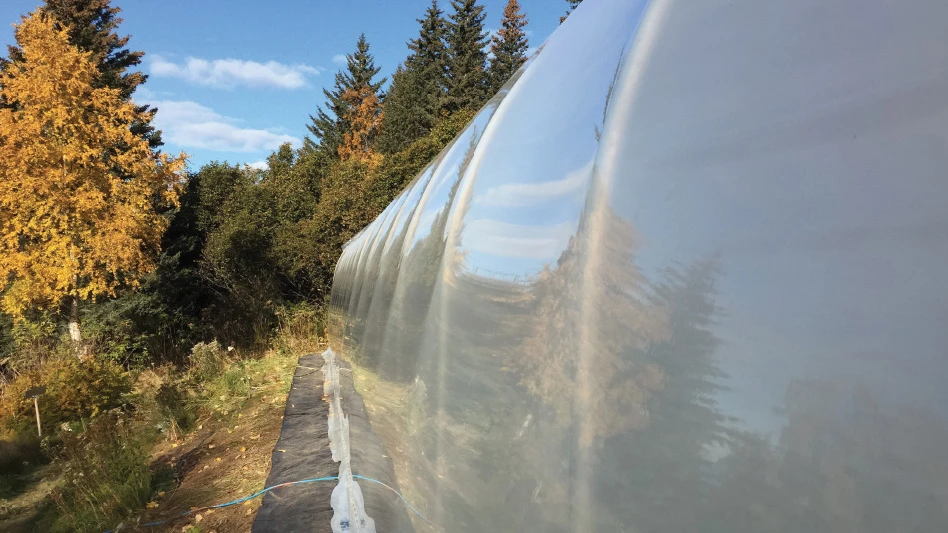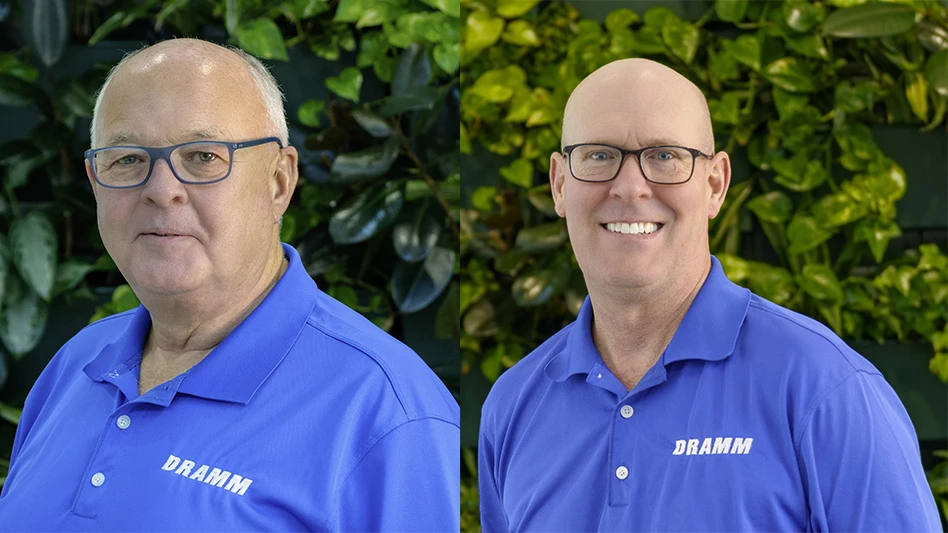
Photos courtesy of John W. Bartok Jr.
Fall is usually the best time to recover your greenhouses. The new glazing provides high light transmission and a strong surface before winter sets in. Removing and recovering poly covered greenhouses is a chore that most growers don’t look forward to. Luckily with today’s plastic, this only has to be done every four years.
When removing old plastic, the large sheets are difficult to compress into a small volume that doesn’t take up too much space. The two common methods of handling used plastic are rolling or baling. Compared to throwing it into a dumpster, these save handling time and shipping costs.
There is limited commercial equipment that is available. Some growers have developed their own equipment or methods. Others are using equipment designed for other purposes. Here are a few pieces of equipment that may help with this task.

Rollers
Powered rollers are available from several companies. The tractor power take-off or hydraulic motors are usually the power source. Roll width and diameter are varied by design. In operation, one end of the plastic sheet is attached to the roller. Several people may be needed to guide the material as it is being rolled.
Brookdale Farm Supply sells a tractor-mounted, three-point hitch hydraulic plastic mulch winder designed with a reel and removable end plate. The hydraulic control adjusts reel speed. The core is tapered for easy removal of the roll of plastic when complete.
Another plastic mulch retriever is manufactured by Kennco Manufacturing. It will handle several hundred feet of plastic that has been pulled off the greenhouse. The hydraulically operated cones prevent the plastic from sticking for easy roll removal.
Andros Engineering (andros-eng.com) makes a roller designed for crop protection fabric removal that could be used for gathering and rolling plastic off greenhouses. The three-point hitch tractor-mounted winder travels down the side of the greenhouse to collect the plastic without it touching the ground. The large 4’ x 4’ roll will hold several hundred feet of poly.


Balers
Balers are the most common method of handling larger quantities of plastic. Some growers have mounted a used stationary cardboard baler on a trailer. Others load the plastic into a dumpster and let the recycling company bale it.
Kennco Manufacturing makes a BigFoot baler — a tractor-mounted, hydraulic-operated film plastic baler. It produces 1,000-pound finished bales with wire ties. This is equivalent to about 10 40’ x 100’ rolls of 6 mil plastic. This baler is also available as a trailer-mounted unit with self feed nip rollers that pull the plastic off the greenhouse and feed it into the bale chamber without it touching the ground. This unit has an independent 20-horsepower engine to power the baler.
Both rectangle and round hay balers have been used to densify film plastic. Very little modification is needed. Cut-off knives may need to be sharpened more frequently if the plastic is dirty. Pickup fingers may also need more frequent replacement. Sisal twine is replaced with plastic twine to eliminate removal at the recycling center. One safety modification that may be needed is a fabricated sheet metal personnel guard over the hay pickup fingers.
Rectangular hay balers with a cross feed work better than those with an auger feed, as there is a potential for plastic to become wrapped in the auger. A PTO model eliminates the need for an auxiliary motor, but either type of baler works well.
Round balers roll the film into a 4’ to 5-1/2’ diameter bale weighing 1,000 to 1,500 pounds. Bale size is controlled by the tension in the side chains or belts. Plastic twine is placed over the bale to keep it from unwrapping. A forklift is needed to handle the bales.
Disposing of used plastic is more difficult since the tariff with China went into effect. The cleaner the material, the more value it has for recycling into other consumer products.

Explore the August 2024 Issue
Check out more from this issue and find your next story to read.
Latest from Nursery Management
- GIE Media Horticulture Group wins five regional 2025 Azbee Awards of Excellence
- Get to know Pat Reilly with NewGen Boxwood and the American Boxwood Society
- Terra Nova Nurseries introduces rust-free and disease-resistant heucherella
- John T. Nickel, founder of Greenleaf Nursery Co., passes away at 89
- Three tours offered at 2025 Farwest Show
- Garden Media Group announces sixth annual Women in Horticulture Week
- Star Roses and Plants announces National Knock Out Rose Day
- The Growth Industry Episode 4: How federal budget cuts are affecting horticulture nonprofits





